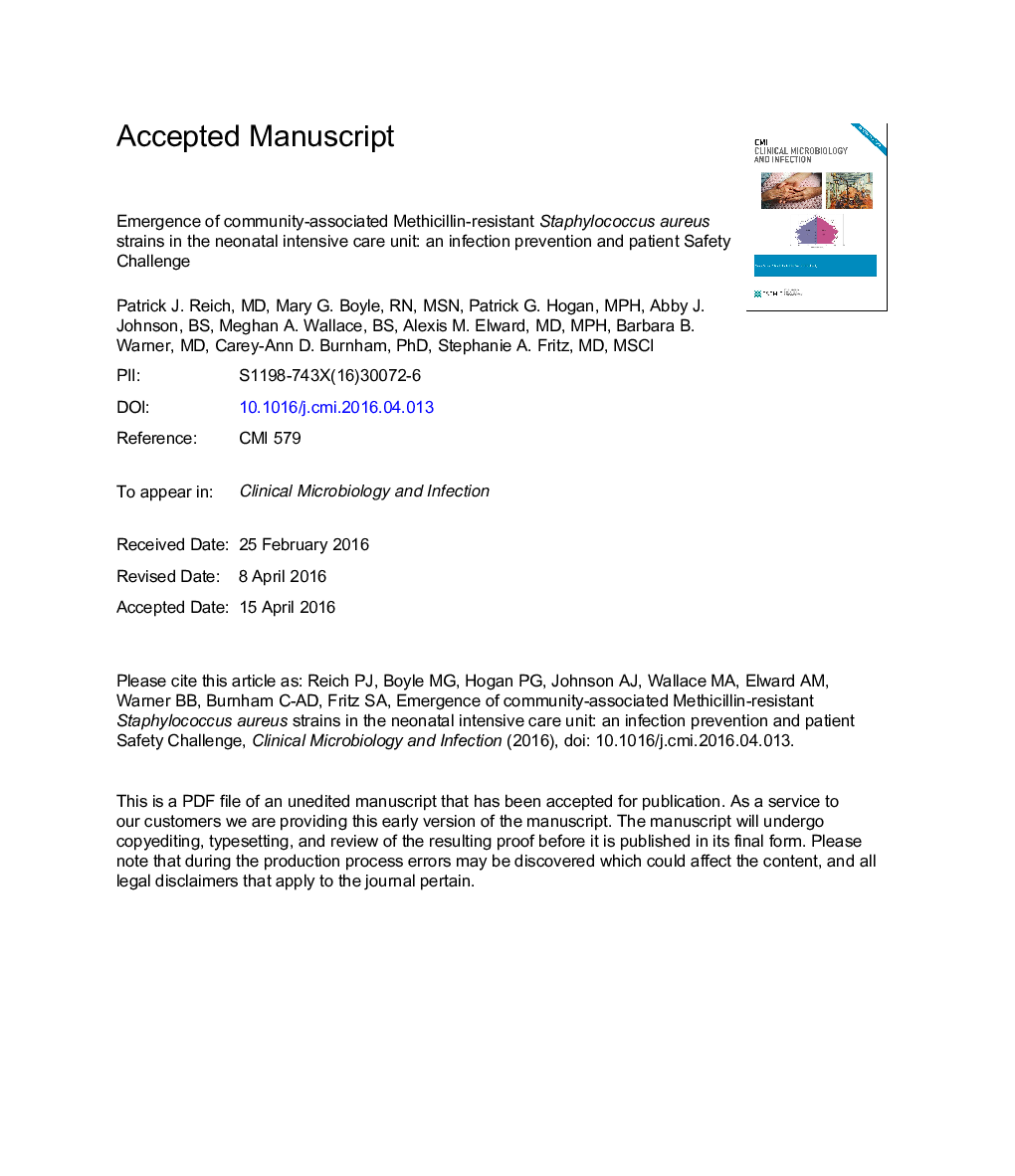| کد مقاله | کد نشریه | سال انتشار | مقاله انگلیسی | نسخه تمام متن |
|---|---|---|---|---|
| 6128827 | 1222141 | 2016 | 31 صفحه PDF | دانلود رایگان |
عنوان انگلیسی مقاله ISI
Emergence of community-associated methicillin-resistant Staphylococcus aureus strains in the neonatal intensive care unit: an infection prevention and patient safety challenge
دانلود مقاله + سفارش ترجمه
دانلود مقاله ISI انگلیسی
رایگان برای ایرانیان
کلمات کلیدی
methicillin-resistant Staphylococcus aureus - استافیلوکوک اورئوس مقاوم به متیسیلینNasal colonization - استعمار بینیEpidemiology - اپیدمیولوژی(همهگیرشناسی)Mupirocin - موپیروسینneonatal intensive care unit - واحد مراقبت های ویژه نوزادانInfection prevention - پیشگیری از عفونتStaphylococcal Cassette Chromosome mec - کروموزوم کاسه استافیلوکوکChlorhexidine - کلرهگزیدین
موضوعات مرتبط
علوم زیستی و بیوفناوری
ایمنی شناسی و میکروب شناسی
میکروب شناسی
پیش نمایش صفحه اول مقاله

چکیده انگلیسی
Methicillin-resistant Staphylococcus aureus (MRSA) infections cause significant morbidity and mortality in neonatal intensive care units (NICUs). We characterized the clinical and molecular epidemiology of MRSA strains colonizing NICU patients. Nasal MRSA isolates (n = 250, from 96 NICU patients) recovered through active surveillance from 2009 to 2014 were characterized with staphylococcal cassette chromosome mec (SCCmec) typing and detection of mupA (marker of high-level mupirocin resistance) and qacA/B (marker associated with chlorhexidine resistance). Factors associated with community-associated (CA-) or healthcare-associated (HA-) MRSA were evaluated. The overall prevalence of MRSA nasal colonization was 3.9%. Of 96 neonates in our retrospective cohort, 60 (63%) were colonized with CA-MRSA strains and 35 (36%) were colonized with HA-MRSA strains. Patients colonized with HA-MRSA were more likely to develop MRSA infections than patients colonized with CA-MRSA (13/35, 37% versus 8/60, 13%; p 0.007), although the interval from colonization to infection was shorter in CA-MRSA-colonized infants (median 0 days, range -1 to 4 versus HA-MRSA-colonized infants, 7 days, -1 to 43; p 0.005). Maternal peripartum antibiotics were associated with CA-MRSA colonization (adjusted odds ratio (aOR) 8.7; 95% CI 1.7-45.0); intubation and surgical procedures were associated with HA-MRSA colonization (aOR 7.8; 95% CI 1.3-47.6 and aOR 6.0; 95% CI 1.4-24.4, respectively). Mupirocin- and chlorhexidine-resistant MRSA was isolated from four and eight patients, respectively; carriage of a mupirocin-resistant strain precluded decolonization. CA-MRSA strains are prominent in the NICU and associated with distinct risk factors. Given community reservoirs for MRSA acquisition and transmission, novel infection prevention strategies are needed.
ناشر
Database: Elsevier - ScienceDirect (ساینس دایرکت)
Journal: Clinical Microbiology and Infection - Volume 22, Issue 7, July 2016, Pages 645.e1-645.e8
Journal: Clinical Microbiology and Infection - Volume 22, Issue 7, July 2016, Pages 645.e1-645.e8
نویسندگان
P.J. Reich, M.G. Boyle, P.G. Hogan, A.J. Johnson, M.A. Wallace, A.M. Elward, B.B. Warner, C.-A.D. Burnham, S.A. Fritz,